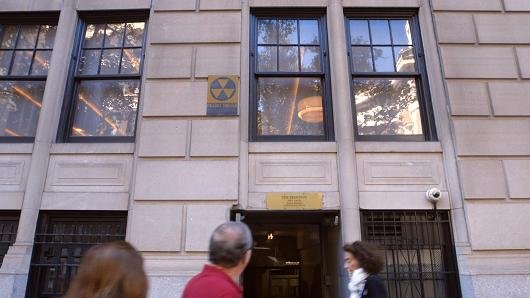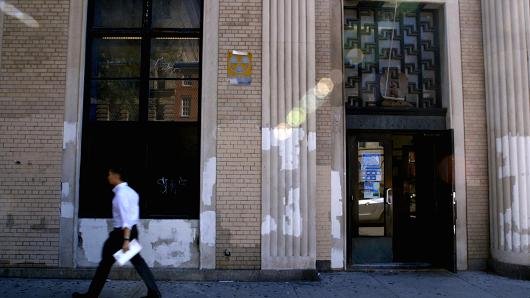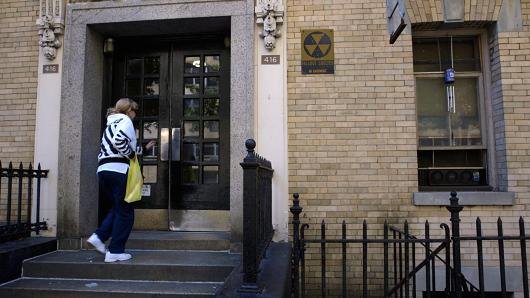If you've ever seen a black and yellow sign in New York City marking a nuclear fallout shelter, don't be fooled into trying to take cover there.
In all likelihood, the bunker no longer exists.
The signs that you see speckled across the city are historic relics of the Cold War, harking from a time when New York City had 18,000 fallout shelters that could house up to 11 million people.

But even though some signs remain, Jeff Schlegelmilch, deputy director of the National Center for Disaster Preparedness at Columbia University's Earth Institute, says not to rely on them as part of any survival plan.
"They're a relic of the Cold War. They largely just don't exist anymore," he said.
That's because most have been converted into laundry rooms or storage areas. The food and medicines that once filled them have long since been removed.
The shelters were largely discontinued in the 1970s, when federal funds for the program dried up.

Beyond that, research today suggests that it may actually be safer for people to shelter in place rather than attempt to evacuate during a nuclear attack.
"Some of the modeling we've seen suggests that you can save hundreds of thousands of lives, if not more in certain scenarios, by having people appropriately shelter in place," said Schlegelmilch.
The best thing to do if caught in a nuclear attack is to stay inside, preferably in a building made of brick or concrete. Schlegelmilch recommends going as far below ground as possible or taking shelter in the center of a tall building.

If you are outside, and you survive the initial blast, Schlegelmilch says you have 10 to 20 minutes to get to a shelter as far from the blast as possible. Once inside, remove your clothing to keep radioactive material from coming into contact with your skin.
He also recommends stocking food, water and medicine at your home and place of work and having a "go bag" prepped in case you have enough notice to grab supplies before you leave the area.
"I think the one silver lining with the escalating tensions with North Korea is that people are paying attention to nuclear preparedness," he said.
"We have the opportunity to talk about some of the complexities of it with a willing audience."
Hi! I am a robot. I just upvoted you! I found similar content that readers might be interested in:
https://www.cnbc.com/2017/10/06/thinking-the-unthinkable-dont-rely-on-these-historic-fallout-shelters-in-case-of-a-nuclear-attack.html
Congratulations @rup1187! You have completed some achievement on Steemit and have been rewarded with new badge(s) :
Click on any badge to view your own Board of Honor on SteemitBoard.
For more information about SteemitBoard, click here
If you no longer want to receive notifications, reply to this comment with the word
STOPCongratulations @rup1187! You have received a personal award!
Click on the badge to view your Board of Honor.
Do not miss the last post from @steemitboard:
Congratulations @rup1187! You received a personal award!
You can view your badges on your Steem Board and compare to others on the Steem Ranking
Vote for @Steemitboard as a witness to get one more award and increased upvotes!